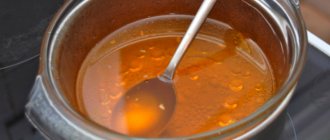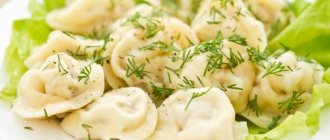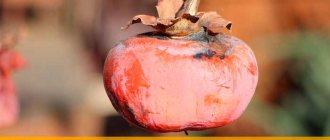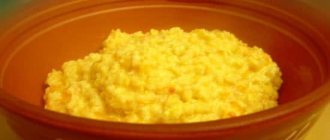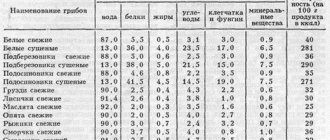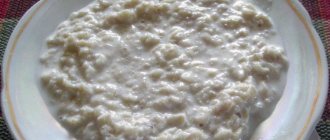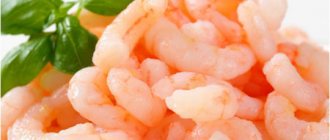The main benefits of rice
The composition of different varieties of rice differs from each other. However, the main components of the composition are the same and it is the presence of these elements that determines the usefulness of the product. Rice contains quite a lot of protein (about 8%) and important amino acids. The product contains fats, including saturated and unsaturated fatty acids. Rice also contains dietary fiber (there is more of it in brown rice), starch, vitamins b, e, n (brown rice is rich in them); many minerals: k, p, mg, cl, ca, na, s, fe, zn, i, mn, cu, se, cr, b, f, mo, si, al, v, ni, co.
The energy value of rice can be considered low: about 300 kcal per 100. Rice is easily digested by the body and does not cause stomach irritation and does not burden the pancreas. Soups and rice porridges have enveloping properties. Rice removes excess sodium from the body, thus normalizing metabolism. Rice absorbs toxins and wastes in the body. The product has a fixing effect, which is especially important for indigestion and diarrhea.
The product is useful for gastritis with high acidity, gastric ulcer and duodenal ulcer. The starch contained in rice, entering the intestines, almost unchanged, creates a favorable environment for the growth and development of healthy intestinal flora. Rice is an indispensable product for dietary nutrition; many tasty and healthy dishes can be prepared from it, using different types, each of which has special taste and purpose.
The benefits of rice for those suffering from pancreatitis
How is this grain useful? According to experts:
- After cooking, rice has a slimy consistency, which, when it enters the stomach, does not cause irritation and coats it well.
- Rice is a light product, and it does not overload the inflamed pancreas; it is also well and quickly absorbed.
- Another advantage of this grain is its cleansing properties; it absorbs toxins and removes them from the body.
- Also, the grains of this plant include many carbohydrates, which are necessary for energy. This is very important for a sick, powerless person. After consuming this product, carbohydrates are broken down in the body, which provides the body with energy.
- It is known that with acute pancreatitis, the patient may be bothered by diarrhea, but rice has a fastening property. Therefore, it can solve this problem too.
Composition of the product and its benefits for gastrointestinal diseases
Rice is very popular in the cuisines of people around the world. The love for this cereal is due to its special taste and nutritional qualities. Rice is also an integral part of many therapeutic diets due to its unique composition and set of vitamins and minerals.
Composition of rice (per 100 g of product):
- proteins: 7.3 g; fats:
- 2.0 g;
- carbohydrates: 63.1 g;
- water: 14.0 g;
- calorie content: 284 kcal.
Rice cereal contains the following minerals:
- iron;
- iodine;
- potassium;
- calcium;
- magnesium;
- selenium;
- sulfur;
- fluorine;
- zinc.
There are also vitamins in rice - all B vitamins, as well as tocopherol, biotin, niacin. Rice for pancreatitis can be consumed from the third day of illness. Useful components help restore the functions of the pancreas and regenerate its tissues.
B vitamins improve the function of the central nervous system.
Tocopherol (Vit. E) is a natural antioxidant. In diseases of the digestive system, the body needs a large amount of antioxidant substances.
Rice contains essential amino acids that accelerate the regeneration processes of affected tissues. Rice groats do not contain gluten, and therefore do not place additional stress on the stomach and pancreas. Cereal is a natural absorbent. When it enters the digestive tract, it adsorbs a significant portion of toxins and metabolic products of pathogenic microorganisms.
Choosing the right rice
When starting to eat rice for pancreatitis, it is important to be careful about the choice of cereal crop. It is better if the grains are polished, with a minimum fiber content, which causes inflammatory processes in the stomach. The maximum portion of rice for a patient with pancreatitis is determined individually. When compiling a diet during treatment, you cannot include traditional pilaf or sushi in the menu, although they include rice, but do not contribute to improving your well-being.
After a correct diagnosis, patients with pancreatitis begin to consume rice cereal on the second day. It is better to choose rice porridge or soups prepared based on this culture. You will have to exclude sugar and butter from the diet menu.
Milled rice has a noticeable disadvantage: a reduced amount of vitamins and minerals needed by a weakened body. Patients with chronic pancreatitis are likely to experience constipation. To avoid an unpleasant situation, it is recommended to steam the grains or add stewed vegetables and sea fish to the menu - the products will help compensate for the lack of useful microelements.
Rice dishes have a positive effect on the activity of the gastrointestinal tract only if the patient follows a complete, healthy diet. The complex is developed by the attending physician, who indicates to the patient the amount of rice allowed for consumption. It is necessary to be especially careful in your diet during remission days. The primary goal of following a diet is to reduce the load on the pancreas; the result is achieved through proper, balanced nutrition.
What kind of rice is used
There are several varieties of rice, which differ from each other in the degree of processing: steamed, polished, unpolished (brown), long-grain, short-grain, wild, red.
Most often, white polished rice is used for pancreatitis of the pancreas, as it boils quickly and easily, which allows you to prepare homogeneous and viscous dishes from it. However, this does not mean that it is the most useful; on the contrary, it contains the least amount of vitamins and microelements.
Most of the beneficial substances are contained in the shell, which is removed after grinding, leaving mostly carbohydrates inside the grain.
In order for the body to receive all the necessary substances, during the therapeutic diet, rice must be wisely combined with other ingredients - vegetables, fruits, lean meat and fish.
If the patient has no contraindications, the doctor prescribes black or brown rice as healthier cereals.
But this is only possible during a period of stable remission, since unpolished rice is covered in a rough pityriasis-like shell, which can irritate damaged and inflamed mucous membranes.
It should be taken into account that these varieties have a specific taste, and the cost is significantly higher compared to regular rice.
The amount of rice consumed is determined by the attending physician, since only he knows the individual characteristics of the patient’s body and the picture of the disease.
Which rice is best to eat for pancreatitis?
There are many varieties of cereals that differ in the degree of processing : polished, unpolished (brown), steamed, wild.
For diseases of the pancreas, it is more useful to cook food from white polished or steamed rice . It cooks quickly and boils well. Polished cereal has a special structure and is gentle on all organs of the gastrointestinal tract. However, white rice is not the healthiest: it contains fewer vitamins and microelements compared to other varieties.
Attention! Be sure to cook the cereal until fully cooked. An undercooked product causes the pancreas to work harder.
In case of acute pancreatitis, dishes made from wild or unpolished (brown) rice are prohibited for consumption, because it is covered with a rough pityriasis-like shell. This cereal irritates the inflamed mucous membrane of the digestive tract. In the acute form of the disease, brown rice can be harmful, but during persistent remission it is recommended to include it in the diet in small quantities.
Brown rice for pancreatitis
Brown rice is not very different from the white variety. This is the same plant in its unpolished form. During production, rice grains are subjected to extremely gentle processing, which is why the pityriasis-like rough shell remains on their surface. It is not recommended to use brown rice for pancreatitis, especially during an exacerbation of the disease. In case of persistent remission, this type of cereal can be consumed in limited quantities, but it is prohibited to introduce it as a permanent component of the diet.
Is brown rice allowed for pancreatitis?
So, white rice is one of those rare foods that can be consumed for pancreatitis, even when the disease is in the acute stage. Is it possible to have brown rice for pancreatitis?
It must be said right away that brown rice is not much different from its white counterpart. Moreover, they are the same plant. It’s just that individual grains of rice in a spikelet are hidden under several protective shells. A thin brown film is directly adjacent to the grain.
It is its presence that causes the unusual coloring of brown rice. In other words, brown rice is an unpolished product. During its production, rice grains are subjected to extremely gentle processing, which is why the pityriasis-like rough shell remains on their surface.
So, is it possible to eat brown rice for pancreatitis? Unfortunately, unlike its white relative, there are a number of restrictions on the use of brown rice for inflammation of the pancreas. In particular, it should absolutely not be included in the menu during an exacerbation period. At this time, it will do more harm than good.
But when stable remission occurs, you can occasionally enjoy brown rice. But unlike white, this product will definitely not become the basis of a treatment menu.
Brown rice and its features
A product such as brown rice is a valuable source of minerals and vitamins for the body. It is not surprising that it is recommended in the diet of diabetics, as well as all those who adhere to healthy lifestyle standards or suffer from certain heart diseases.
Eating one glass of brown rice allows you to cover the daily needs of the human body for a number of microelements and vitamins. Do not forget that it is perfectly absorbed in the human body, and also gives a long-lasting feeling of satiety, which is also important.
It is important to understand that brown rice has a relatively short shelf life, so this product should not be purchased for future use. In order for such rice to retain maximum of its medicinal and beneficial properties, it is recommended to store it in airtight containers. The cereal itself is characterized by normalization of blood sugar levels, a mild effect on the intestines, and active removal of toxins from the body.
If for pancreatitis the consumption of brown rice is occasionally allowed, then for many diseases, on the contrary, it is recommended to eat it regularly. This applies to ailments such as diabetes, vitamin deficiency, and some gastrointestinal disorders.
Video on the topic:
How to choose rice for pancreatitis
When purchasing, we need to be guided by what kind of dish we want to prepare from rice. "Wild rice" - red or brown - used for salads, soups, hot and cold appetizers, toppings and desserts. It is especially good as a side dish for fish when mixed with steamed long-grain rice.
White is suitable for sushi, cereals, pies, casseroles, puddings and various desserts.
Jasmine is good as a side dish for Thai and Chinese cuisine, as well as for making soups and salads and desserts. Basmati is suitable not only for pilaf, but also for any dish of Asian cuisine. When buying rice, you need to make sure that the grain is free of pieces and fragments of grains. The cereal should not contain grains of a different size or color, they should all be the same.
White
Contains 7% protein, 74% starch, and very small amounts of fat, vitamins, fiber and minerals. It is well absorbed and digested, suitable for dietary nutrition and for people watching their weight. It is stored for a long time and is quickly prepared. When polished, few useful substances and vitamins remain in it. Regular consumption of this type of grain can provoke the development of cardiovascular diseases and diabetes.
Brown or red
Contains substances that help prevent Alzheimer's disease. Used in the diet of pregnant women as an excellent source of complex carbohydrates and other nutrients. Contains vitamin PP, carotene, thiamine, minerals, fiber and folic acid, amino acids (tryptophan, methionine, choline, lecithin, lysine, histidine, cystine and arginine).
They help the health of skin, hair, vision, heart, lungs, brain, nervous system. Suitable for diabetics.
Excessive amounts of this rice may cause mineral deficiency and is not suitable for baby food. In addition, the grain cannot be stored for a long time, due to the fact that the husk containing oil is not peeled off, which means it can go rancid.
Basmati
Its benefit lies in the high content of the rare substance amylase, which means it is recommended for nutrition of people suffering from pancreatic insufficiency; – cystic fibrosis; – pancreatectomy; – acute and chronic hepatitis; – pancreatic necrosis; – toxicosis during pregnancy. The most expensive of all types of rice. Due to amylase, this grain should be avoided in case of acute, chronic and reactive pancreatitis with pancreatic cysts, cholecystitis, and renal failure.
Jasmine
Due to its unique properties, this type of rice can be consumed for chronic gastrointestinal diseases, diseases of the bladder and kidneys, as well as during lactation in the absence of milk. It is not recommended to consume this type of rice if you have impotence, constipation, or diabetes.
What are the benefits of the rice diet?
A simple rice porridge or soup can work wonders of medicine in a sore stomach. Thanks to their viscous consistency, both dishes coat the mucous cavities, forcing the pancreas to work properly. As a result, digestion is easier and faster, the risk of diarrhea is reduced, and the stomach begins to absorb food normally again, without unpleasant consequences.
Rice is quickly digested and well absorbed by the body; eating cereal will hardly put any strain on the affected pancreas.
Due to its sorbing ability, cereal absorbs toxins, which greatly complicate the normal passage of the digestive process.
It is important not to get carried away with the rice diet, consume in small portions, soon the patient will feel pleasant changes in the body. The danger of constipation present with such a diet can be easily eliminated by including vegetable dishes and fresh fruits in the daily menu.
Rice diet and its benefits
Rice is one of the products based on the properties of which diets (including medicinal ones) have been developed, which is associated with the beneficial substances it contains. Purified, it contains less of them than the wild one.
Not only the rice itself is healthy, but also the decoction made from it. The components of the decoction coat the mucous membrane of all parts of the intestines, dull the feeling of hunger, and most importantly, do not burden the pancreas and liver.
Despite the fact that it contains carbohydrates, it is recommended to use it for pancreatitis. This recommendation does not apply to those who have diabetes.
Rice in the treatment of acute pancreatitis
The first signs of acute pancreatitis appear in patients who have suffered an attack of the disease. The attack is accompanied by acute, sometimes unbearable pain in the abdominal area, the source of which is the inflamed pancreas.
After such an attack, the patient is allowed to eat normal food after two to three days. First drink, then liquid rice porridge with water and milk without butter, salt and sugar is added to the diet. After a couple of days, rice soup appears. By the end of the first month of treatment, the patient has the right to choose pudding or rice meatballs.
Polished rice is used to prepare dishes. Cereals boil faster and are absorbed by the body better than other varieties. Eating rice during pancreatitis, especially in the acute stage, is useful due to its sorbing properties and “calming” effect on the mucous membranes of the stomach.
In acute pancreatitis or exacerbation of chronic
When a person first has inflammation of the pancreas, that is, there is an acute form of the disease, he needs absolute hunger for 2-3 days. Nutrition during this period is parenteral - nutrients are administered intravenously. The same applies to exacerbation of a chronic disease - only the fasting period is reduced to one day.
When the time required to restore the pancreas has passed, a gradual expansion of the diet begins.
Against the background of exacerbation of pancreatitis, it is allowed to eat rice dishes cooked in water, without adding oil, salt or sugar. First, semi-liquid porridge is introduced into the diet. By the end of the first week, you are allowed to eat thick porridge, soup, and pudding.
What are the benefits of rice dishes during the acute stage of the disease?
Rice porridge for pancreatitis, as well as soup, are staple foods that have the following beneficial properties:
- the mucous consistency of the finished product does not have an irritating effect on the mucous membrane of the gastrointestinal tract;
- pancreatic juice is produced in the smallest volume, which has a beneficial effect on recovery;
- rice, like a sponge, absorbs harmful substances in the intestines well;
- after eating rice dishes, you feel full for a long time, which is due to the complex carbohydrates it contains;
- Pancreatitis is often accompanied by diarrhea. Porridge or any other rice dish will help eliminate this unpleasant symptom, since it has a fixing property.
Prohibitions and restrictions
Despite its beneficial properties, cereals have contraindications for consumption. It is forbidden to eat cereals in cases of II-III degree of obesity, bowel movement disorders with a tendency to constipation.
It is not recommended to eat rice porridge if you have irritable bowel syndrome and frequent colic. Excessive consumption of fatty foods with rice can lead to potency disorders and sexual dysfunction.
Eating unpolished rice for pancreatitis is strictly prohibited. During exacerbation of chronic pancreatitis, you can only eat slimy rice soups. The nutrition of patients with diseases of the gastrointestinal tract should be agreed with the attending physician. Whether a patient receives benefit or harm from rice depends on compliance with the prescribed diet.
If the patient has chronic pancreatitis
When the chronic stage of pancreatitis occurs with characteristic signs of exocrine and endocrine insufficiency, careful monitoring of nutrition is required. Rice remains part of the list of a few products recommended for the patient, which continue to have a positive effect on the gastrointestinal tract in conditions of exacerbation of the disease.
To diversify the rice diet and saturate the food with vitamins, proteins and microelements, it is allowed to consume the cereal in combination with boiled or stewed vegetables. You can use rice as a side dish for fish, lean meat, adding a little vegetable oil/butter or kefir to the dish. You should not exclude the usual rice porridge with milk and cereal soup from your diet. Casseroles, puddings, and vegetables stuffed with rice are useful for chronic pancreatitis.
At this stage of the disease, polished grains can easily be replaced with steamed rice, which is quite suitable for preparing a side dish. The cereal needs to be cooked longer until soft.
It is recommended to avoid frequent consumption of rice dishes during remission of chronic pancreatitis. Every body needs a large range of nutrients, which white rice is poor in. The rice diet partially complicates bowel function, leading to frequent constipation. Brown rice, unlike white rice, retains selected microelements during heat treatment, however, the use of this grain is extremely rare in case of stable, confident remission.
Rice for chronic pancreatitis in remission
Can I have rice or not during remission, and in what form? The period of subsidence of clinical symptoms is a favorable time to expand the diet with rice dishes. But you should not abuse them for the following reasons:
- white, boiled rice, due to the fact that it is peeled, contains a small amount of useful substances;
- unpolished rice is healthier, however, you can cook anything from it only during a period of stable remission;
- Cereals are contraindicated if there is a predisposition to constipation. Even rice water and its infusion slow down intestinal motility and cause constipation.
Despite the shortcomings and possible consequences among all cereals, rice remains the leader in the number of dishes allowed for illness.
To eliminate the deficiency of nutrients (microelements and vitamins), you can add a vegetable to the cereal, for example, carrots or pumpkin. If there is no history of diabetes, then you are allowed to prepare sweet dishes as dessert - pudding, casserole. Brown, red, and wild rice are perfect for preparing your own dish for dinner. A good addition would be a portioned piece of boiled low-fat meat or fish.
Rice is a recommended product for pancreatitis
Rice for pancreatitis is one of the allowed foods, which is prescribed immediately after the symptoms of inflammation have been eliminated. It is recommended to eat it if you have a history of not only inflammation of the pancreas, but also chronic cholecystitis, gastritis, colitis and other pathologies of the gastrointestinal tract. However, not all varieties of rice and dishes made from it are equally healthy. You can find out what dishes are best to prepare from this article.
Nuances of preparation for illness
How to prepare a dish correctly so that it is not only healthy, but also tasty? The classic recipe for a delicious decoction lies primarily in the right choice of cereals. Polished rice is preferred during periods of exacerbation, as it can be quickly cooked. Instead, you can take steamed cereal, but it should be cooked longer. During the period of remission, you can add a little butter to the rice broth for chronic pancreatitis.
Steamed rice is more suitable for dishes in which it is important to have grains to grains, for example, when preparing sweet pilaf with the addition of raisins, dried apricots and other dried fruits. Spicy pilaf with fatty meat is contraindicated in case of illness, even during a period of stable remission. And also, you should be careful when using relatively new dishes with the addition of rice - sushi. Milk soup, meatballs, porridge, puddings are the main rice dishes suitable for consumption with pancreatitis.
Acute pancreatitis and rice
Is it possible to consume the studied grain during an acute form of the disease? People diagnosed with pancreatitis have very limited food intake. And the doctor immediately recommends that they eat rice congee. Later, it is permissible to eat grain, combining it with drink. Is it possible to have rice for pancreatitis? At the very beginning of the disease, porridge (in water) is allowed to be eaten only in a very diluted state. After a while, you can consume milk rice soup. Meatballs are also allowed to be introduced into the diet over time. To prepare such dishes, it is better to use white polished grain; it boils quickly and creates the desired consistency.
Recipes for cooking rice for pancreatitis
Rice dishes prepared taking into account the rules of dietary nutrition allow you to make the menu bright, tasty and interesting.
Dishes intended for a patient with pancreatitis are prepared using a special technology. This also applies to the preparation of porridges.
Dairy
For viscous milk porridge you will need the following ingredients:
- cereal - 3/4 cup;
- water - 1 glass;
- milk - 1 glass.
For thin porridge, increase the amount of water and milk.
For a classic dietary dish in multicookers, it is recommended to stick to a 1:2 ratio.
Place a pot of water on the fire. Rinse the grain thoroughly - in warm, then in hot water until it becomes clear. Pour the cereal into boiling water and cook until half cooked. Then pour in hot milk and cook the porridge until fully cooked. The cereal should become soft. Grind the finished dish through a sieve.
In a slow cooker
Dietary meals can be prepared using a multicooker. Such a kitchen appliance practically does not require the participation of the cook in the cooking process (no need to stir, add water, etc.). A special mode is provided for preparing cereal dishes; you just need to maintain the ratio of ingredients.
For a classic dietary dish in multicookers, it is recommended to adhere to a 1:2 ratio - for 1 multi-cup of cereal, 2 multi-cups of water or milk. All ingredients (including salt, sugar, butter) are placed in a multi-bowl. By selecting the “Porridge” mode, you can wait until the dish is ready, or additionally press the “Delayed Start” mode and get a nutritious, complete breakfast.
Porridge
Good option for breakfast. You will need:
- rice - half a glass;
- water - 3 glasses.
Rinse the cereal and add water. Cook until boiling, then reduce heat and cook until tender. Add salt and sugar to taste. With the condition of stable remission, water is replaced with low-fat milk.
Nettle and rice soup
The vitamin-rich soup is prepared using 100g of rice, onions, carrots, 2 tbsp. oils Rice must be washed and placed in boiling salted water. After 20 minutes, add finely chopped nettles, butter, finely chopped onions and carrots and cook the soup for another 10 minutes.
Soup with zucchini and rice
The combination of vegetables and rice makes it possible to obtain a nutritious and flavorful dish that prevents the development of constipation. To prepare the soup, you need to take one medium-sized zucchini, 100g rice, 1ml water, 10g butter, salt. The zucchini is washed and peeled, cut into cubes, and thrown into salted boiling water. Add rice to it and cook for 15 minutes. At the end of cooking, chopped herbs are added to the soup, and butter is added when serving.
Chicken pilaf
You can’t make pilaf according to the classic recipe, it’s too fatty a dish. For dietary pilaf you will need:
- chicken breast - 100 grams;
- rice cereal - 100 grams;
- carrots - 1 piece;
- onion - 1 piece.
Rinse the cereal and let it cook. Lightly fry the chicken breast in a little butter. Cut the carrots into strips, the onion into cubes, and also lightly fry. Add meat and vegetables to the cereal, simmer for 15-20 minutes. You can have a little butter and salt. Do not use spices or fatty meats.
Traditional Fergana pilaf
Anyone who does not suffer from gastrointestinal diseases can prepare pilaf using this recipe! For diseases of the digestive system, there is recipe No. 2 - a dietary version of Fergana pilaf
Let me remind you that spicy, fatty and fried foods increase the activity of the digestive organs, including the functional activity of the pancreas, i.e. pancreatic juice begins to be actively produced. However, pancreatic juice does not exit into the intestines due to inflamed ducts; it remains in the pancreas, which causes digestion of the organ itself and is perceived by patients as an attack.
Recipe No. 2. Diet pilaf
In accordance with the dietary requirements for pancreatitis, changes have been made to Fergana pilaf:
- We use lean meat: beef, veal, chicken or turkey fillet. Lamb, pork, fatty and stringy beef, goose, and duck are not allowed.
- We use olive or any vegetable oil (limited). How to choose oil - the oil should not foam when boiling in a frying pan and should not have a pronounced odor. Fat tail fat is not allowed.
- We use spices for pilaf, formulated in accordance with dietary requirements. Ready-made mixtures, spices for pilaf that contain hot pepper, and hot seasonings are not allowed.
- Add more vegetables to the pilaf.
Ingredients:
- Meat, beef - 230 g;
- Rice cereal – 145 g;
- Carrots – 65 g;
- Onions – 100g;
- Butter – 20g;
- Salt - to taste;
- Water
Cooking technology:
- Boil the meat until half cooked and cut into small pieces.
- Let the carrots simmer with butter;
- Blanch the onion (for diet No. 5, sautéing the onion is not recommended).
- Combine meat and vegetables. Add 150 g of water and bring to a boil.
- Add thoroughly washed rice. Cook for 40-45 minutes over low heat until the liquid is completely absorbed.
Steamed veal soufflé
Ingredients: boiled lean veal 300 g, steamed rice 15 g, skim milk ½ cup, 1 tbsp. butter, 1 egg, pinch of salt. Beat the meat together with a piece of butter and the yolk in a blender (you can use a meat grinder, but a blender gives the mass an airiness). Boil the cereal and cool, add to the veal. Beat the egg white until foamy and add to the minced meat. Grease a soufflé container with a small amount of butter, place the soufflé and place in a water bath for 20 minutes.
Rice pudding
Rice dessert can replace various sweets and baked goods while on a diet. You need to take 600 ml of milk, 60 g of rice, 50 g of sugar, a bag of vanillin, 30 g of raisins, salt. In a medium saucepan, mix milk, rice and salt, then place the pan with the resulting mass over high heat and bring to a boil. Then reduce the heat and cook until the rice is soft, this usually takes 25 minutes.
The mixture must be constantly stirred so that the rice does not stick to the bottom and walls of the pan. Then remove the pan from the heat and add sugar and vanillin to the existing mass, return to the heat and cook until thickened (5-10 minutes). After the pudding is removed from the heat and raisins are added. Transfer the pudding into a mold and cover with plastic wrap. Can be consumed after 2 hours.
Prohibitions and restrictions
Despite its beneficial properties, cereals have contraindications for consumption. It is forbidden to eat cereals in cases of II-III degree of obesity, bowel movement disorders with a tendency to constipation. It is not recommended to eat rice porridge if you have irritable bowel syndrome and frequent colic. Excessive consumption of fatty foods with rice can lead to potency disorders and sexual dysfunction.
Eating unpolished rice for pancreatitis is strictly prohibited. During exacerbation of chronic pancreatitis, you can only eat slimy rice soups. The nutrition of patients with diseases of the gastrointestinal tract should be agreed with the attending physician. Whether a patient receives benefit or harm from rice depends on compliance with the prescribed diet.
Sources: https://gastrotract.ru/bolezn/pankreatit/ris-pri-pankreatite.html https://pankreatit03.ru/ris-dlya-podzheludochnoj-zhelezy.html https://ogkt.ru/pankreatit/ris- pri-pankreatite.html opodjeludochnoy.ru/pravilnoe_pitanie/razreshen-li-ris-pri-pankreatite https://podzhelud.ru/dieta/ris-pri-pankreatite https://yazdorov.win/diabet/mozhno-li-upotreblyat -ris-pri-pankreatite.html diabetexit.com/pankreatit/ris.html This material is exclusively subjective and is not a guide to action. Only a qualified specialist can determine an accurate diagnosis and prescribe treatment.
Last modified: 03/20/2020
Sample menu during treatment of pancreatitis
Rice can be used to prepare many dishes for patients suffering from pancreatitis. Cereal is used in first and second courses and even desserts .
Porridge
Rice porridge is good for breakfast in remission .
Ingredients:
- rice groats - 1/2 cup;
- salt, sugar - to taste;
- water or low-fat milk - 3 tbsp.
Rinse the rice thoroughly, place in a saucepan, add water or milk. Turn the heat to high, bring the liquid to a boil, then reduce the heat. Cook the cereal until cooked for about 15–20 minutes, add salt and sugar.
Porridge can be prepared in a slow cooker using the “Milk porridge” mode. In this case, the rice turns out even more boiled and beneficial for the gastrointestinal tract.
Vegetable soup
For problematic pancreas, soups are best prepared from vegetables .
Ingredients:
- rice - 50 g;
- water - 1.5 l;
- carrots - 1 pc.;
- onion - 1/2 head;
- medium-sized zucchini - 1 pc.
Rinse the cereal thoroughly several times, pour into a saucepan, add water, and put on fire. Wash the vegetables, peel them, cut them into small cubes. When the rice boils, add vegetables to the pan and add salt to taste. Cook for another 15–20 minutes. Let the soup sit for 10-15 minutes before serving.
Chicken pilaf
Lamb or pork pilaf is too fatty, so they use chicken breast, but do not add spices .
Ingredients:
- chicken breast - 150 g;
- rice - 100 g;
- water - 200 ml;
- butter - for frying;
- carrots - 1 pc.;
- onion - 1 pc.
Rinse the cereal well several times, pour into a cauldron or pan with a thick bottom, and add water. Fry the chicken breast a little. Cut the carrots into strips, chop the onion, and lightly simmer in butter. Mix meat, vegetables and cereals, add salt, cover and simmer for 20–25 minutes.
Steamed veal soufflé
Ingredients:
- boiled veal - 300 g;
- rice cereal - 15 g;
- skim milk - ½ tbsp.;
- butter - 1 piece;
- egg - 1 pc.;
- a pinch of salt.
Grind the boiled veal, a piece of butter and the yolk in a blender. You can twist it in a meat grinder, but with the help of a blender the mass will become airy. Cook the rice until tender, cool, and add to the meat mixture. Beat the whites into a foam and mix with the minced meat. Grease the mold with oil, lay out the prepared mixture and place in a water bath for 25 minutes.
Pudding
Rice pudding is suitable as a dessert .
Ingredients:
- skim milk - 500 ml;
- rice - 60 g;
- sugar - 1 tbsp. l.;
- vanillin - 1 sachet;
- raisins - 50 g.
Rinse the cereal several times, put it in a saucepan, add milk, and put it on the fire. After boiling, cook over low heat until soft. Add pre-steamed raisins, vanillin, sugar to the mixture and cook until thick. Pour the pudding into the mold, cool, and refrigerate for 2 hours.

